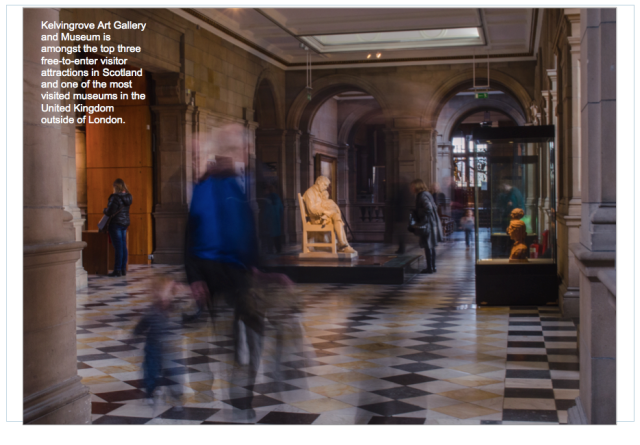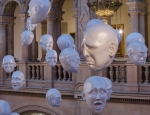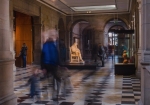Introduction In photography, a narrative is the way of telling a story through a set of photographs. The set of photographs, usually anything from three to more than a dozen, form a photo essay. The term ‘photo essay’ was coined in a Life magazine advertisement in 1937, as they promoted the photographic story as being superior to a simple collection of pictures (Freeman, 2012, loc 108). Technological advances had made cameras faster allowing for more candid shots and public appetite for seeing world events in photographs grew. In response to this many other pioneering illustrated magazines across the globe expanded the use of photo essays in the 30s, 40s and 50s. Freeman (2012, loc 108) notes that the rise of the photo essay also allowed magazine editors to extend more control over the selection and sequence of images that were published.
Exercise- A narrative picture essay The course notes ask that I explore the idea of narrative by setting myself an assignment and then photographing it, to tell it’s story. After selecting, researching and photographing the story I should give careful consideration as to how I layout the photographs to create interest between the images and ensure they hang together as a set.
Research and Preparation The course notes advise that a narrative treatment is best suited to subjects made up of several parts or events that have a sequence of things happening, and uses an example of a street parade. However, as I was tackling this exercise whilst in Scotland, in zero degree January weather, there seemed to be a lack of interesting public events even after scouring through newspapers and websites to look for upcoming events. I decided to change tact slightly after reading a section of The Photographer’s Story, the Art of Visual Narrative (2012) by Michael Freeman. He discusses loosely grouped classifications of photo essay and lists them as
- People Stories
- Location stories
- “Making-of” stories
- Commodity stories
- Activity stories
- Collection stories
- Institution stories
- Concept stories
This helped me to broaden my thinking and I began to consider the idea of location and/or institution stories. This idea developed as I attended a Jack Vettriano exhibition in Glasgow. The exhibition was being held in the city’s Kelvingrove Art Gallery and Museum, a majestic building, constructed in 1901 in a Spanish baroque style. Aside from the temporary Vettriano exhibition the museum and gallery is home to over 8000 objects and artifacts. I decided that the building and it’s permanent exhibits could be interesting subjects for a photo essay and extended my visit to scout out potential shots and enquire about gaining a photograph permit. Following this, I used a structure suggested by Freeman (2012, loc 1335) to sketch a picture script under the headings-
- Events
- Locations
- Set Ups
- Activities
- People
- Add-Ons
The Shoot I initially considered using a ‘typical day at the galleries’ approach, perhaps by recording shots throughout the period of a day. However, I then decided to use a place a more ‘travelogue’ style. Where each picture would show an aspect of the ‘story’ that builds to give an overall impression as discussed by Short (2011, p102). Freeman (2012, loc 1083) labels this type of story a location story. He notes that the while the most well-known aspects of the site should be shot, the key to making the a location story work, is to try to capture it’s character. This involves spending time to get the personality of the place and the details. I planned the shoot for mid-week to avoid the increased visitor numbers at the weekend and arrived early in the day. I began shooting as I approached the gallery and museum, as I wanted this type of shot for the narrative opener. My previous trip had made the layout familiar and this helped me to navigate my way around the 22 different galleries. One of the main activities I wanted to capture was the organ recital that takes place at 1pm. I therefore found a good position to shoot from and set myself up before this time. The lighting inside the gallery was quite low in places, which meant I relied on the use a tripod a lot of the time. There seemed to be a mixture of lighting types to which called for some creative use of WB. I had planned to take some shots of the buildings exterior during the golden hour/blue hour but unfortunately my camera battery died. This meant that another visit had to be planned to do this. However, I did learn a valuable lesson.
Selection and layout of the photo essay Keeping in mind the need to keep the photographs selected interesting, attractive and varied I narrowed my selection of photographs down to 25 and printed these off on a contact sheet. I then cut into individuals and began experimenting with layouts. I spent some time looking for software that would help me display an attractive layout on-line, although I eventually used Word for its simplicity and familiarity of use. Freeman (2012, loc 190) notes the need for structure in a story. He outlines the four essential elements of a story structure as
Opener– very important, as in photography this has to grab the viewer’s attention
Body– can be any particular length, but should be appropriate to the interest level of the story.
Climax– the key shot, the highest-impact photograph in the set
Closer– should bring completeness to the story He also stresses the need for rhythm and pacing (2012, loc 369) when putting a series of photographs together. Rhythm is described as visual and emotional variety in sequence while pacing is when key shots are held back until the right time.
Opener –
Page 1. I selecting this photograph as the narrative opener for a few different reasons. It shows the galleries from the exterior, establishing its location. It also shows a curving road that leads the eye, and also visitors, to the building. Compositionally, the balance is quite dynamic. The section of grey, cloudy sky also provided ample room for a heading and text.
Body– Page 2. I continued by selecting two further shots of the building’s exterior, albeit this time closer up. It could appear that the viewer is gradually getting closer to the building. I paired these together due to their similar content and colour scheme.
Page 3 and 4. Again, pairings of similar, subtle colour schemes. They both have vertical formats, however I cropped and resized ‘Griselda’ to add a little variety to the layout. I placed the arches on the left as I thought this might help lead the viewer’s eye across the page. I also like the way that the eye lines of the portraits and the sculpture all look in the same direction.
Page 5 and 6. I selected the images on these pages to go together as I wanted them to show the wide range of art exhibited, from traditional to modern. I placed the pop of colour at the top right hand side to break up the, otherwise, neutral coloured layout. I experimented with positioning the ‘floating’ head images as a double spread. I then considered advice from the course notes, which states that, our interest in and familiarity with other people’s faces makes it easy to read people images even when they are very small and therefore decided a small photograph worked just as well.
Page 7 and 8. I selected this shot for a double page spread as it contains a lot of detail and graphic elements. The larger format allows these to be seen. It’s content is also quite different from what has been seen so far, and also perhaps unexpected, this could be considered to have made it a key shot.
Page 9 and 10. These pages introduced a ‘mini-story’, within the larger narrative. These two images are paired as they are at very different scales, one showing the Kelvingrove organ as a distance, the other close-up.
Page 11 and 12. Continuation of the story and also the introduction of the organist and the hint of an audience. These figures help the viewer to gauge the size of the instrument.
Page 13 and 14. These photographs move the viewer on to another part of the museum and gallery, concerning Scottish identity and art. These images were paired together primarily through linked content and similar colour palettes. Although, the yellow colour accent on the sculpture does draw the eye up to the top of the frame.
Page 15 and 16. This photograph was selected to allude to the numbers of visitors who come through Kelvingrove’s doors each year. I like how the stillness of the exhibits is in direct contrast to the movement of the people. I selected a double-page spread so that this could be seen clearly.
My thoughts
This is the first time I have, consciously, attempted to create a picture essay. I have literally taken weeks to decide which photographs to select and organise for this exercise. As usual, I think I was over thinking the task. It has taken me a while to realise that the exercise is designed as a vehicle to practice the skills of editing and layout and there is not only ‘one’ correct way do this. The photographer should instead, as advised by Short (2011), consider the brief and the audience for whom the work is intended. I found Freeman (2012) also very helpful is outlining the need for rhythm and pace in a layout and how this could be achieved. Writing the captions also gave me pause for thought, as I did not merely want to outline to the viewer what they could obviously see in the picture. I instead tried to expand upon this using the words to impart further information. The images above can be viewed individually here.
Freeman. M. (2012) The Photographer’s Story: The Art of Visual Narrative. Lewes: ILEX (Kindle edition)
Short. M. (2011) Context and Narrative. Lausanne: AVA

























